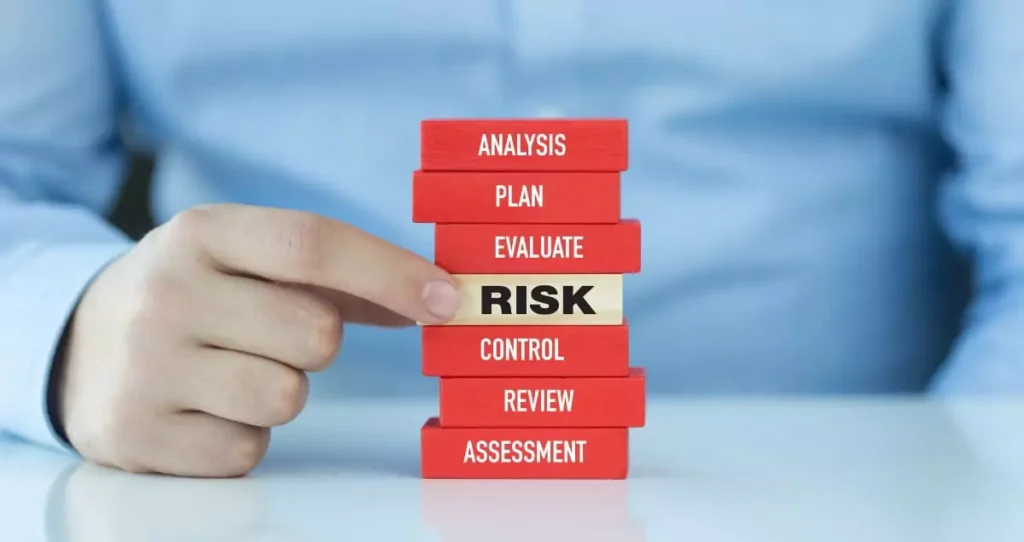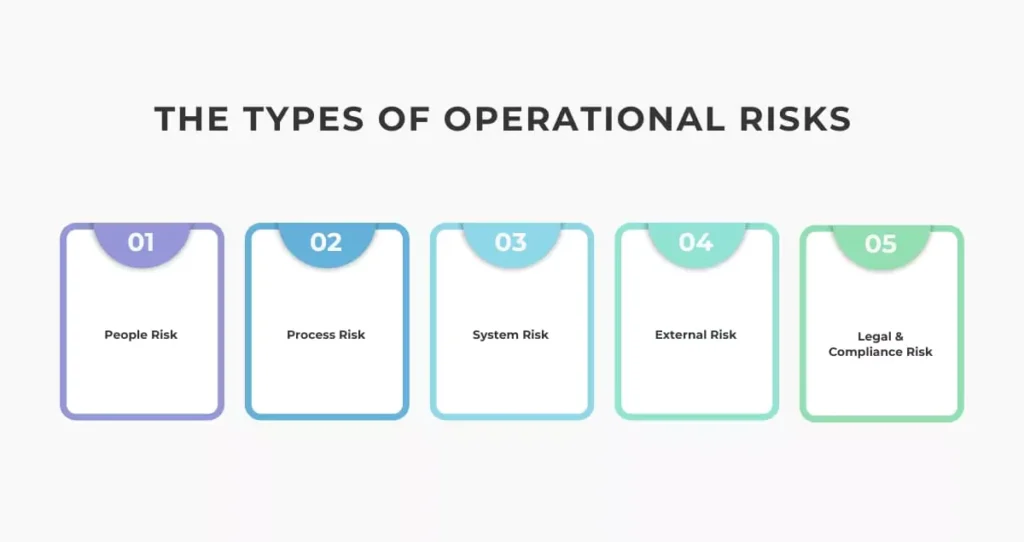Risk. All businesses encounter it. Large or small. You may be thinking, “Yeah, yeah. I know that.” But do you really? Operational risk is usually the one that catches you by surprise. It’s the one you remember too late when you’re in big trouble. That’s where Operational Risk Management (ORM) comes in.
We’ve all been there. Everything’s going well. Then, BAM! A problem that you just didn’t see coming. The bad news? You’re not prepared. But you could’ve been. ORM is all about being ready for the unexpected.
But let’s go back a bit. What is ORM, anyway? Let’s break it down.
So. What is Operational Risk Management?

Suppose you’re on a deserted road, just going about your business. Suddenly, a tire bursts. Now you’re stranded. A punctured tire is an operational risk, isn’t it? And not being prepared for it? That’s what ORM’s all about. It’s about getting ready for whatever might interfere with your day-to-day operations.
ORM is like that spare tire. It’s not something you think about all the time, but gosh, do you ever need it when things break down.
The Types of Operational Risks

So let’s dive into it. What kinds of risks are we talking about? Well, there are several. Here are the big ones:
People Risk
Your team is your strength. But what happens when someone leaves unexpectedly? Or worse, makes a major mistake? That’s people risk. And trust me, it’s a real pain.
Think about it: you’re running a project, and your project manager quits. Suddenly, everything’s in chaos. Deadlines are missed. Clients are unhappy. Oops. People risk at its finest.
Process Risk
This one’s sneaky. Your internal processes are everything. But what if they’re outdated? Slow? Inefficient? That’s process risk. And it can sink your business without you realizing it.
Take this example: You run an e-commerce business. Your payment system is outdated. It crashes every other week. You lose customers. Process risk, anyone?
System Risk
Here’s the tech problem. Whether it’s software bugs, server crashes, or network failures – these system risks can really mess up your day. You won’t even know it’s coming until you’re in the middle of a mess.
Remember when your website crashed during a big sale? Yup, that’s system risk. And it doesn’t care if you’re prepared.
External Risk
Sometimes, it’s not your fault. Suppliers go bust. Natural disasters happen. External risks are the ones you can’t control. You can’t stop a hurricane or a supplier falling off the radar. But you can be ready for it.
Picture this: Your main supplier is hit by a fire, and now they can’t deliver your stock. Your business is paralyzed. External risk, folks.
Legal & Compliance Risk
This one’s the tricky one. Regulations are always changing. Missing a new law can cost you big time. Legal and compliance risk can land you in hot water, especially when it comes to data protection and regulations.
You think you’re good? Then BAM! A new regulation, and you’re behind the game. GDPR is a classic example. Missed it? Big fines are coming your way.
Why Does Operational Risk Management Matter?

Alright, so why bother with ORM? Simple. If you don’t care about it, your business is at risk. Like, real risk. Not the “I hope it doesn’t rain today” kind of risk. We’re talking about the kind of stuff that can put you out of business.
ORM isn’t just about managing risk, it’s about staying ahead. If you can spot risks early and deal with them, you’re in a much better place than someone who waits until it’s too late.
Here’s the deal. Look at Tesla. They’ve had their fair share of risks—production delays, software bugs, etc. But you know what? They didn’t sit around and hope things got better. They managed it. They controlled it. That’s the magic of ORM.
How to Implement Operational Risk Management

Now, let’s get practical. How do you make ORM work for you? No fluff. Just real strategies.
Step 1: Identify Risks
Start by looking at every part of your business. Talk to your team. What’s keeping them up at night? What’s making things difficult? Write it all down. Every single risk. Even the little ones.
No risk is too small. Sure, you might think, “Oh, a missed deadline isn’t a big deal.” But it is. It adds up. And before you know it, it’s a snowball.
Step 2: Assess the Risk
Not all risks are created equal. Some will do serious damage. Others? Not so much. So you need to assess which ones to tackle first. Think about the likelihood of a risk happening and the impact it will have.
A simple risk matrix helps here. Low-risk, high-impact? That’s a problem. High-risk, low-impact? Handle it quickly.
Step 3: Mitigate the Risk
So, what do you do about it? Mitigation is the name of the game. Some risks, you can’t avoid. But you can reduce the impact. Automate processes. Streamline workflows. Train your team. Get tools that make things smoother.
And yeah, sometimes the best move is to just be over-prepared. Have a plan B. No one regrets having an extra tire.
Step 4: Monitor and Review
Risks evolve. So should your ORM strategy. Don’t let it sit on a shelf. Keep an eye on things. Review your practices regularly and make adjustments. Maybe you need to invest in better software. Or update your employee training. Stay flexible.
How Technology Helps ORM

Here’s the kicker. Technology can make your ORM efforts way easier. Take GoHighLevel. It’s a marketing automation tool, but it’s more than that. It’s an ORM powerhouse in disguise.
How? Glad you asked. GoHighLevel automates your customer interactions, tracks key metrics, and helps you monitor your business processes. It spots bottlenecks, keeps track of sales performance, and allows you to identify risks in real time.
For example, imagine you’re running a service business. GoHighLevel automates your client follow-ups, so you never miss a beat. It reduces human error. And if something goes wrong – like a missed follow-up or late delivery – the system alerts you instantly. That’s ORM in action.
Wrapping It Up
Operational Risk Management isn’t just a buzzword. It’s something you need to actively manage. If you want your business to thrive, you can’t afford to ignore it.
Think about it. What happens if you don’t manage risks? Things fall apart. Systems fail. Clients get angry. You lose money. And sometimes, you lose it all.
But when you manage operational risks, you stay ahead. You spot problems before they happen, and you handle them when they do.
And if you’re looking for a tool that can automate a lot of this for you, GoHighLevel is where it’s at. It helps you manage and streamline processes, reducing risks while boosting efficiency.
In the end, ORM isn’t just about managing problems. It’s about creating a safety net for your business. One that lets you keep moving forward, no matter what.



